When Broken Hearts Find Their Mirror: 'Sickroom' and the Art of Healing Through Wounds
A NepaliTheatre.com Review
Some stories arrive disguised as entertainment but reveal themselves as surgery. “Sickroom” at Kausi Theatre is one such piece a scalpel wrapped in theatrical silk, cutting through our comfortable assumptions about love, pain, and the price of human connection.
Photo Credit : Krishpa Shrestha
The Cartography of Damage
Akanchha Karki’s adaptation doesn’t just translate Rajiv Joseph’s “Gruesome Playground Injuries” it performs cultural alchemy. What emerges isn’t American pain dressed in Nepali clothes, but something entirely new: a meditation on how we navigate intimacy in a world that teaches us to hide our wounds.
The opening scene crystallizes this perfectly: young Kalina (Noor Khanal) curled in the school nurse’s office, stomach churning with unnamed pain, when bloodied Diwas (Abishek Khadka) crashes through the door, fresh from launching his bicycle off the roof. Their first exchange“Does it hurt?” becomes the play’s emotional DNA, a question that will echo through three decades of collisions, each meeting triggered by fresh damage.
This isn’t coincidence; it’s gravitational pull. Kalina and Diwas don’t meet cute. They collide in crisis, again and again, their relationship a series of emergency rooms both literal and metaphorical. The genius of the play lies in recognizing that for some people, trauma isn’t an event but a location a place they return to, together
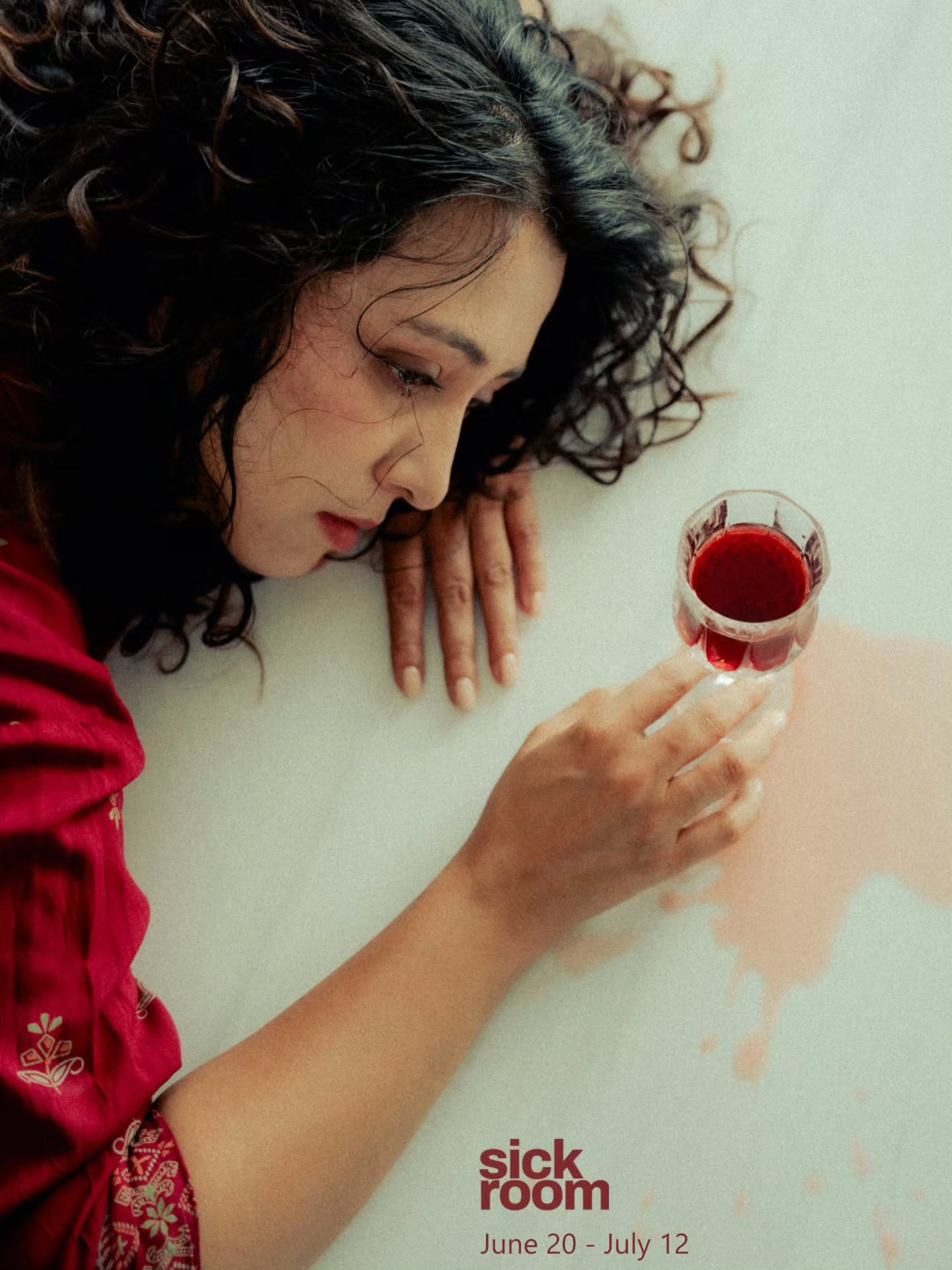
The Owl Knows Everything
Among the production’s most inspired choices is the stuffed owl Kalina’s “angel” that witnesses their decades-long dance of approach and withdrawal. More than mere symbolism, this weathered sentinel becomes emotional archaeology, holding their shared history when they can’t hold each other.
Watch how Khanal clutches it during moments of crisis, or how it sits silent during adult Kalina’s (Karki) desperate hospital vigil when Diwas lies comatose. The owl represents something our culture rarely acknowledges: that healing isn’t linear, that love sometimes looks like two people taking turns being each other’s anchor in the storm.
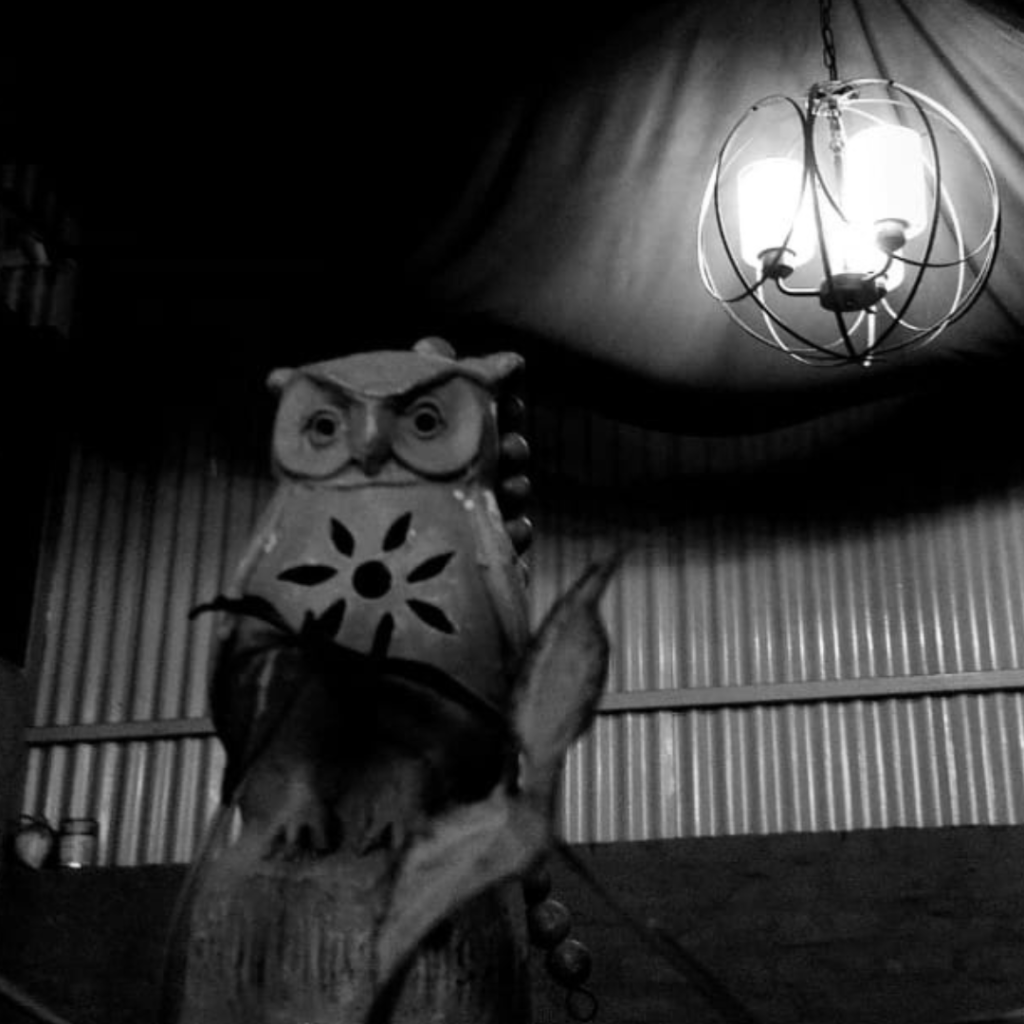
Performance as Exorcism
The four-actor ensemble doesn’t just perform these characters; they channel them with unsettling authenticity. Khanal’s teenage Kalina carries pain like a secret language, her every gesture suggesting depths of hurt she can’t yet articulate. When she whispers “I’ve started using moisturizer” to comatose Diwas, searching desperately for good news to share, the banality becomes devastating.
Khadka’s young Diwas embodies reckless youth with startling physicality his limping, his bandaged wounds, his way of wearing damage like a badge of honor. The moment he rages upon learning of Kalina’s sexual assault is raw enough to leave audience members weeping.
As the adult counterparts, Sudam CK and Karki navigate more treacherous emotional terrain. CK’s wheelchair-bound Diwas doesn’t just act disabled he inhabits the role so completely that his subtle stage movements between scenes (the careful way he maneuvers, the authentic struggle with mobility) create a lived-in reality that transcends performance.
Karki’s adult Kalina is a masterclass in controlled chaos her nervous energy, her sharp wit deployed as defense mechanism, her way of moisturizing Diwas’s hands as both practical care and spiritual ritual. When she declares “I am not well” to his unconscious form, it’s not melodrama but medical diagnosis.
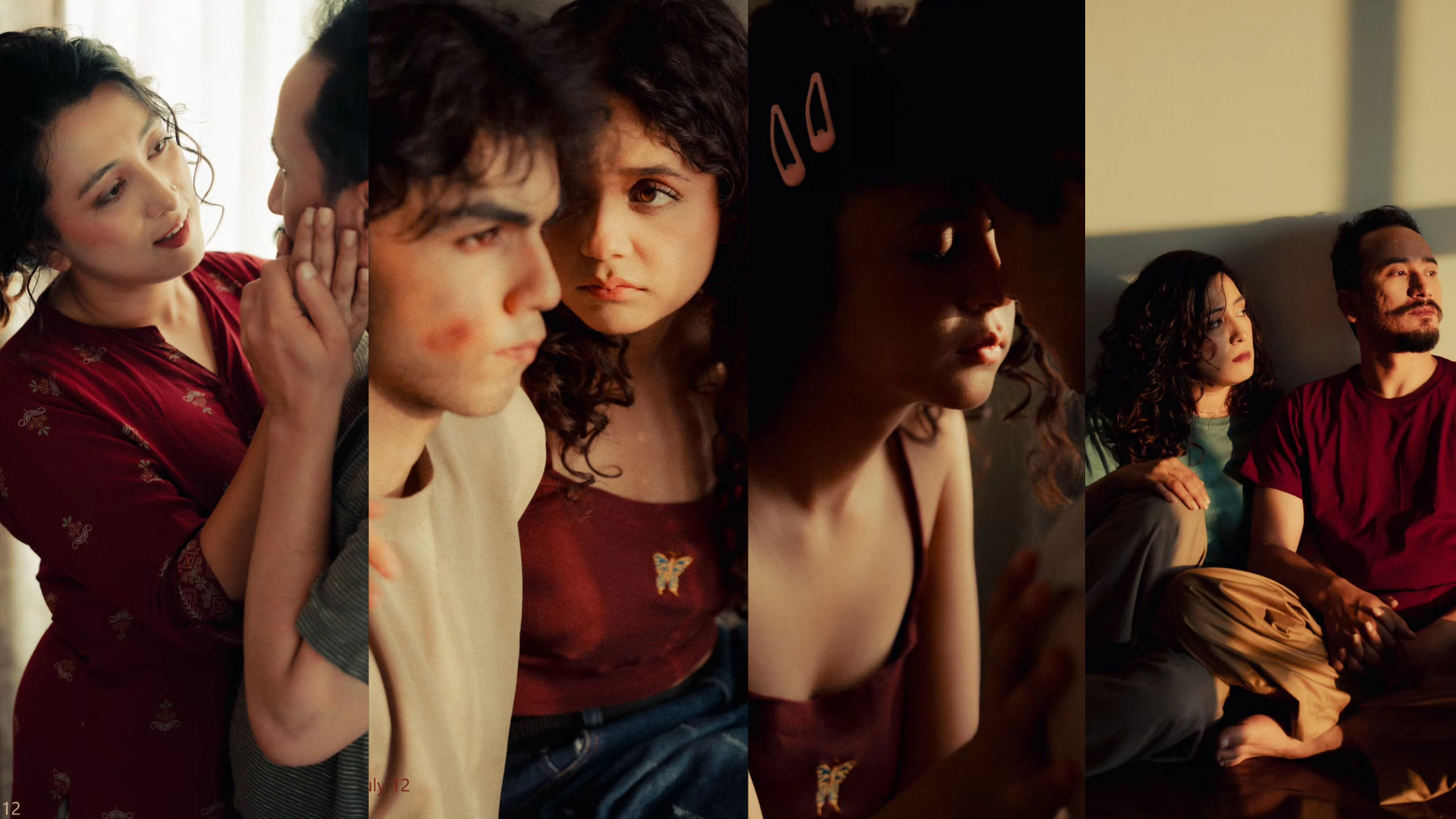
The Architecture of Memory
The play’s non-linear structure mirrors how trauma actually lodges in our psyche not chronologically filed but erupting when triggered. Karki’s direction allows past and present to breathe in the same space, most powerfully when all four actors occupy the stage simultaneously, young and old selves in direct conversation across time.
This isn’t theatrical trickery but philosophical insight: our younger selves never leave us. They speak to our present choices, our current pain, our capacity for both destruction and grace. When young Kalina responds to adult Diwas’s question, or when adult Kalina addresses her teenage self, we’re witnessing the internal dialogue that shapes every damaged person’s reality.
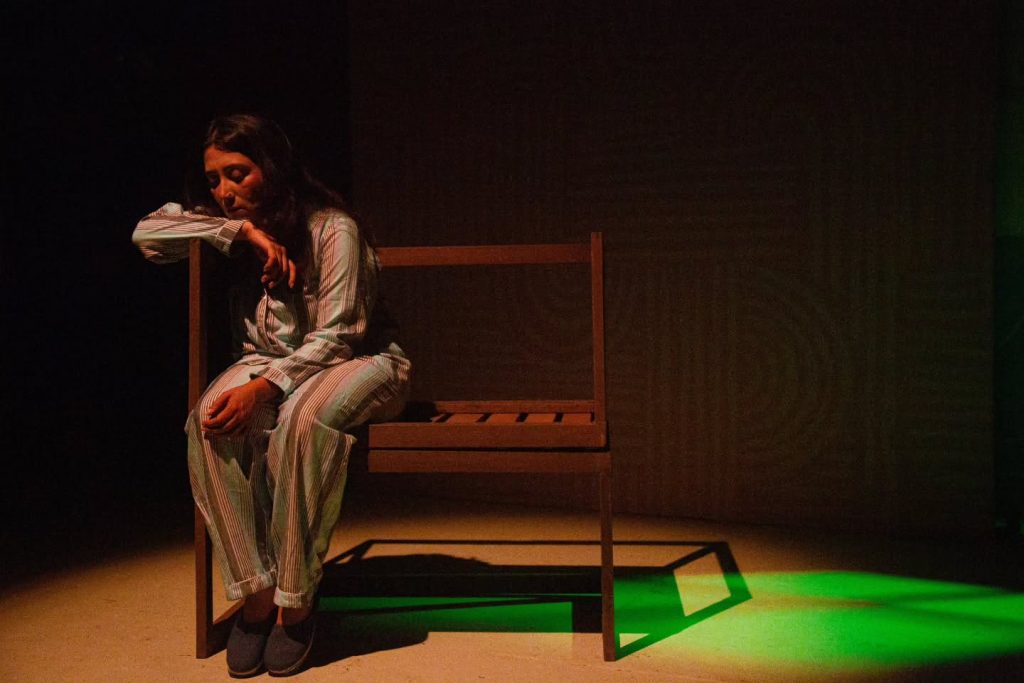
Technical Brilliance Serves Emotional Truth
Rajkamal Fakir’s sound design deserves particular recognition for understanding that sometimes the most powerful moments happen in the spaces between words. The gentle musical interludes don’t manipulate emotion they create breathing room for it to emerge naturally. The suspicious crescendos and melancholic notes become characters themselves, guiding us through psychological landscapes.
The lighting design uses color as emotional shorthand soft yellows and pinks for childhood innocence, stark whites and greens for adult complexity but never obviously. These shifts happen at the edge of consciousness, like memory itself.
The minimalist set design transforms seamlessly from school nurse’s office to hospital ward to bedroom, proving that powerful theatre needs only suggestion, not spectacle. When occasional backstage sounds break the illusion a prop being moved, a door closing they paradoxically enhance the intimacy. We’re reminded this is live performance, that these wounds are being reopened in real time, night after night.
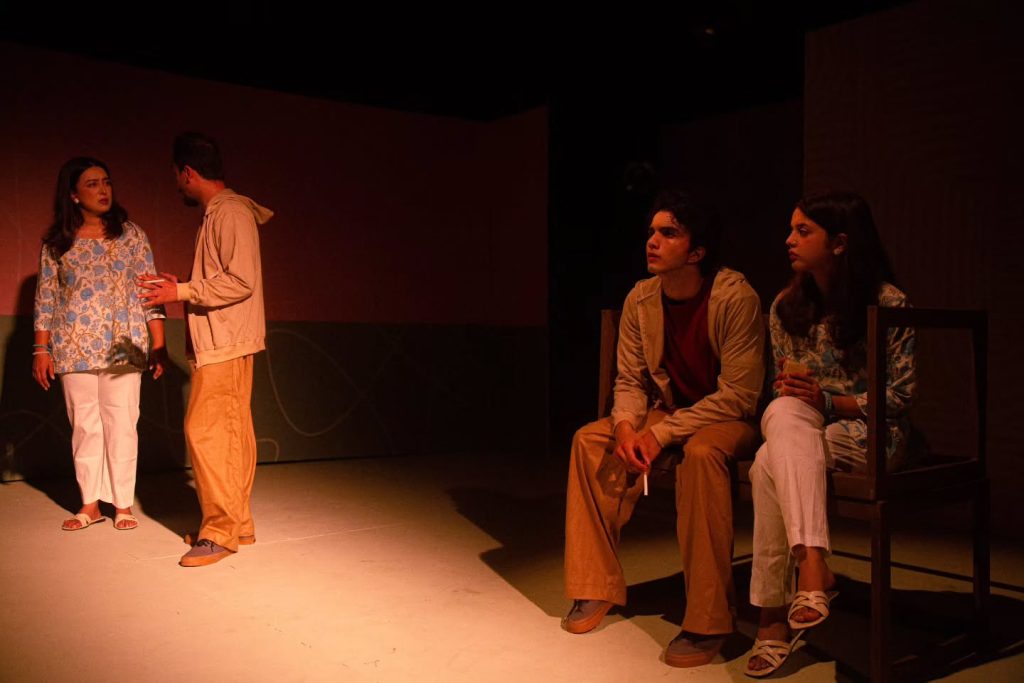
The Question We’re All Asking
“Does it hurt?” becomes the play’s central refrain, but it’s really asking something deeper: How do we love someone whose pain mirrors our own? How do we offer healing when we’re bleeding ourselves? Can two broken people create something whole?
The play refuses easy answers, instead offering something more valuable: recognition. In Kalina and Diwas’s inability to save each other and their persistent attempts to try we see ourselves reflected with uncomfortable clarity. Their relationship defies categories: not quite romantic, not merely platonic, but something more honest than either.
When Diwas insists Kalina’s touch heals him, he’s not being metaphorical. For people who’ve learned that connection comes through crisis, physical contact becomes sacramental. When Kalina finally admits she’s come “to touch you and then I’ll go,” it’s both surrender and salvation.
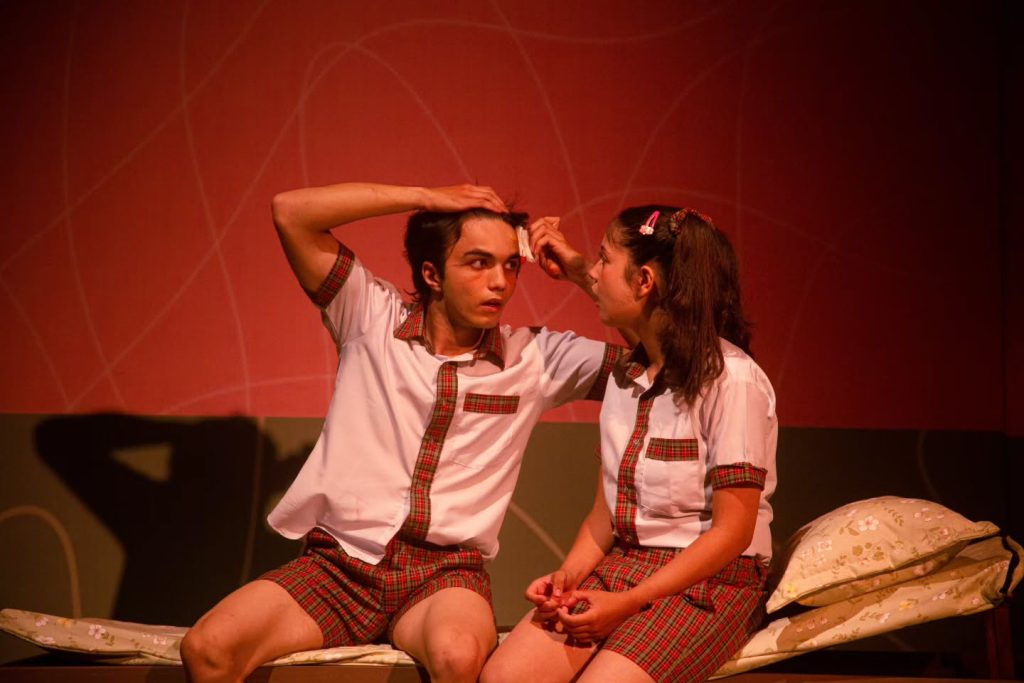
The Nepali Heart Beating
While rooted in American source material, “Sickroom” finds its soul in local details that feel lived-in rather than translated. The casual cruelty of teenage banter (“You’re such a disaster”), the way young people weaponize humor against vulnerability, the particular weight of familial expectations these aren’t mere cultural adjustments but emotional truths that transcend geography.
The dialogue, peppered with authentic Nepali slang and colloquialisms, never feels forced. When young Diwas calls Kalina “crazy” with affectionate exasperation, or when adult Kalina deploys sarcasm as armor, we’re hearing voices from Kathmandu’s streets, not Broadway’s stages.
Yet the play also highlights a hunger in our theatrical landscape a yearning for stories that don’t just speak to us but emerge from us. “Sickroom” succeeds brilliantly as adaptation, but it also points toward the original narratives our theatre community is capable of creating. We need more Diwas and Kalinas, but we also need more stories born from Nepal’s own wounds and healing traditions.
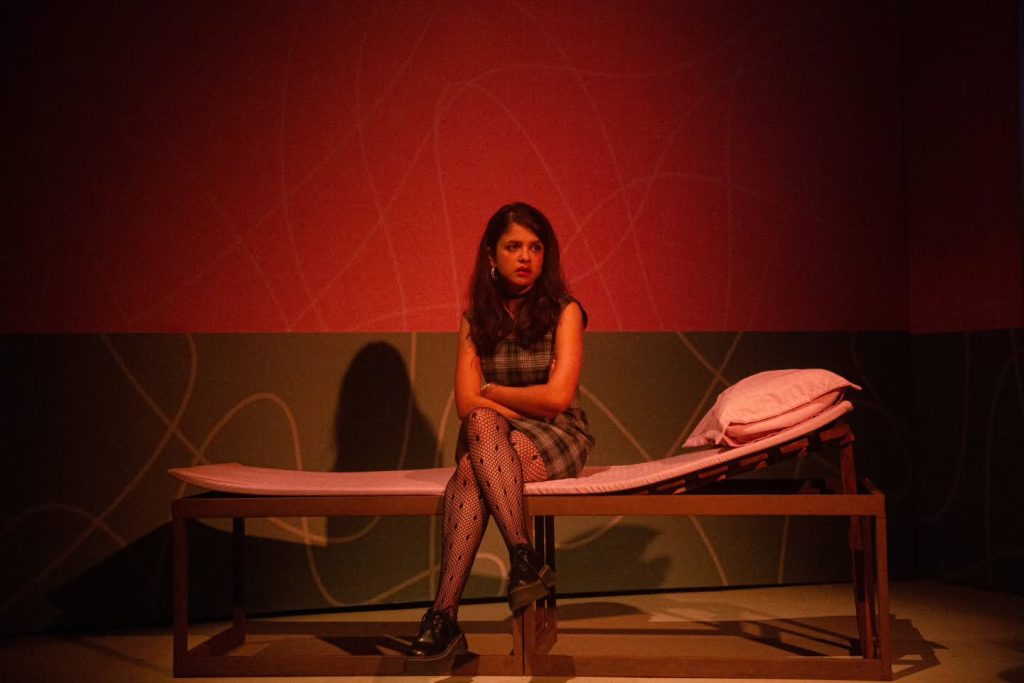
The Courage of Witnessing
What makes “Sickroom” essential isn’t its subject matter but its approach: the willingness to sit with discomfort, to resist the urge to fix what might be irreparable, to find beauty in the spaces where two broken people briefly align.
This is theatre as witness, not therapy. It doesn’t promise healing but offers something equally valuable: the assurance that in our pain, we are not alone. The play’s trigger warning for audiences over 13 isn’t just responsible it’s generous, acknowledging that some wounds require preparation to witness.
The production’s experimental moments particularly its “meta-theatrical” scenes where temporal boundaries dissolve signal a bright future for Nepali theatre. These bold choices demonstrate that our artists are ready to push boundaries, to risk failure in service of deeper truth.
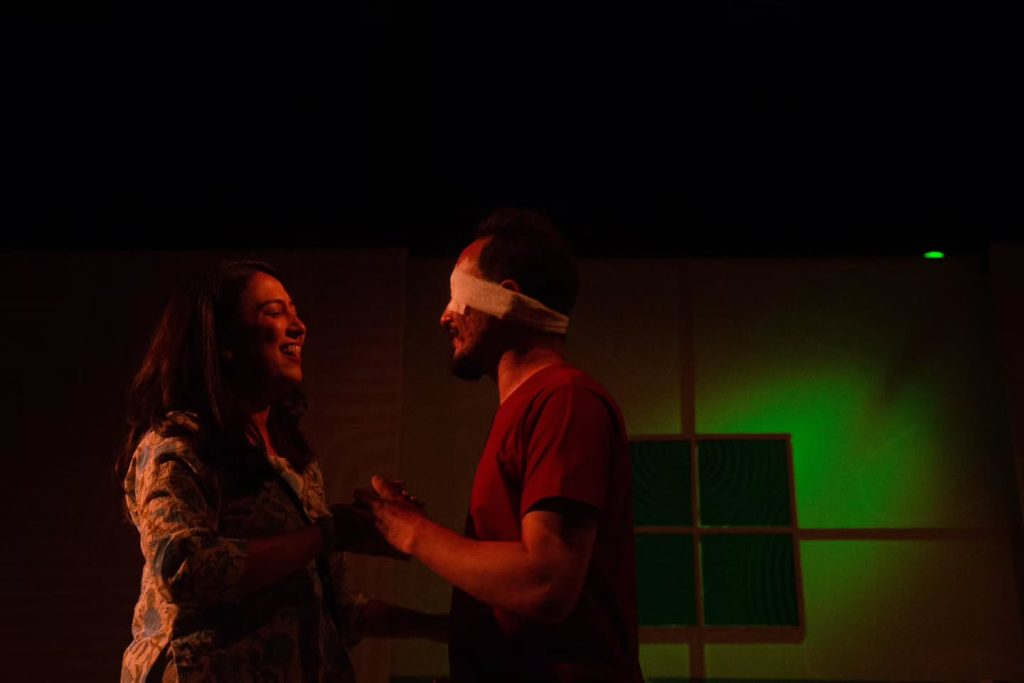
Why This Matters Now
In an era of performed happiness and curated online personas, “Sickroom” offers something radical: permission to simply be broken together. The play arrives at a moment when mental health conversations are finally emerging from shadow, when young people are learning to name their pain instead of hiding it.
But more than zeitgeist, this production represents artistic maturity. The seamless integration of technical elements, the disciplined performances, the confident direction this is Nepali theatre operating at international standards while maintaining cultural authenticity.
The Sacred Space
Running until July 12 at Kausi Theatre, “Sickroom” represents more than entertainment it’s a referendum on how we love and hurt in equal measure. In a world that increasingly demands performance of our pain, the play offers something radical: permission to simply be broken together.
The real sickroom isn’t the nurse’s office or the hospital ward. It’s the space between two people who’ve learned that sometimes the deepest intimacy happens not when we’re healed, but when we’re honest about our wounds.
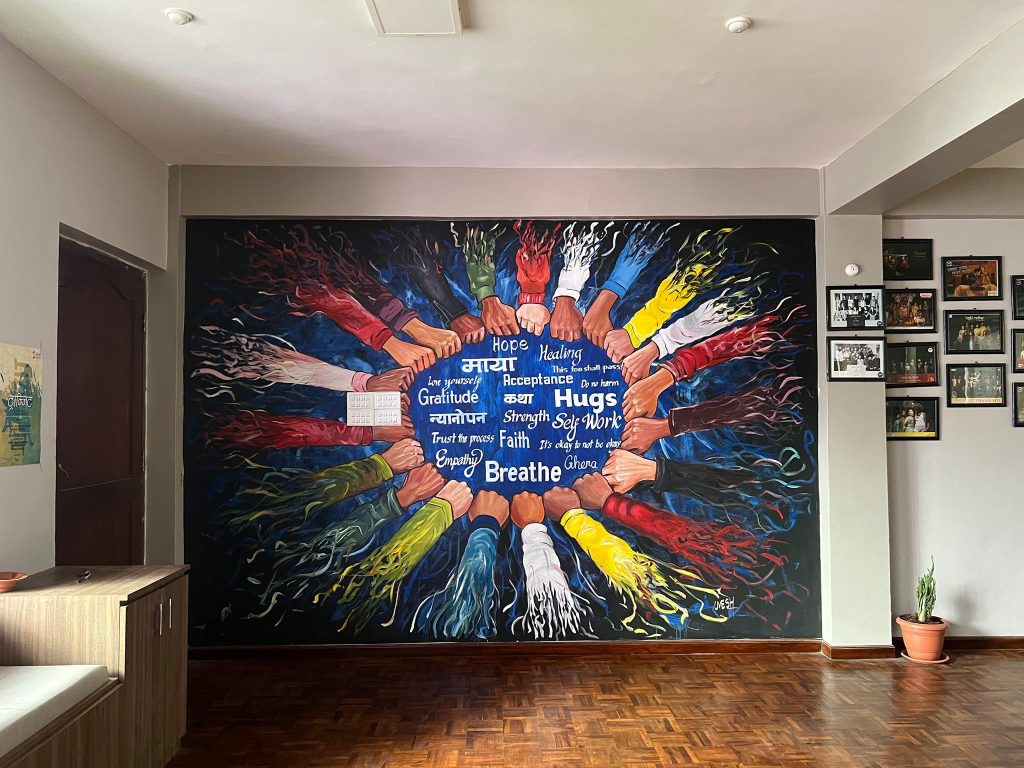
Why You Must Go
This isn’t theatre you watch it’s theatre you experience, that rewrites your understanding of connection and healing. “Sickroom” will leave you changed, not because it provides answers, but because it asks the questions that matter: What does it mean to love someone’s damage? How do we heal without fixing? When is brokenness beautiful?
For first-time theatregoers: This is how live performance should feel immediate, necessary, unforgettable. The intimate venue means every breath, every tear, every moment of recognition happens right in front of you. You’ll understand why theatre matters in ways Netflix never can.
For seasoned theatre lovers: Karki’s direction and the ensemble’s performances represent Nepali theatre at its most ambitious and accomplished. This is the kind of work that elevates our entire theatrical ecosystem, proving we can create art that speaks to universal human experience while remaining authentically ours.
For anyone who’s ever been hurt: You’ll find yourself in these characters, but more importantly, you’ll find yourself less alone in your own wounds. The play doesn’t minimize pain it sanctifies it.
For couples and friends: Go together. The conversations afterward will be unlike any you’ve had. This is art that opens new territories of intimacy.
Book now through July 12 at Kausi Theatre, Teku. Shows run daily except Tuesdays, with Saturday matinees at 1:00 PM. This is the rare production that justifies not just the ticket price, but the emotional investment it demands. In a city where we often choose familiar entertainment over challenging art, “Sickroom” reminds us why theatre matters: it doesn’t just reflect our lives it transforms how we understand them.
Some plays entertain. Others educate. “Sickroom” does something rarer: it witnesses. In its unflinching gaze at human frailty and resilience, it offers the kind of art that doesn’t just deserve our attention it demands our presence.
